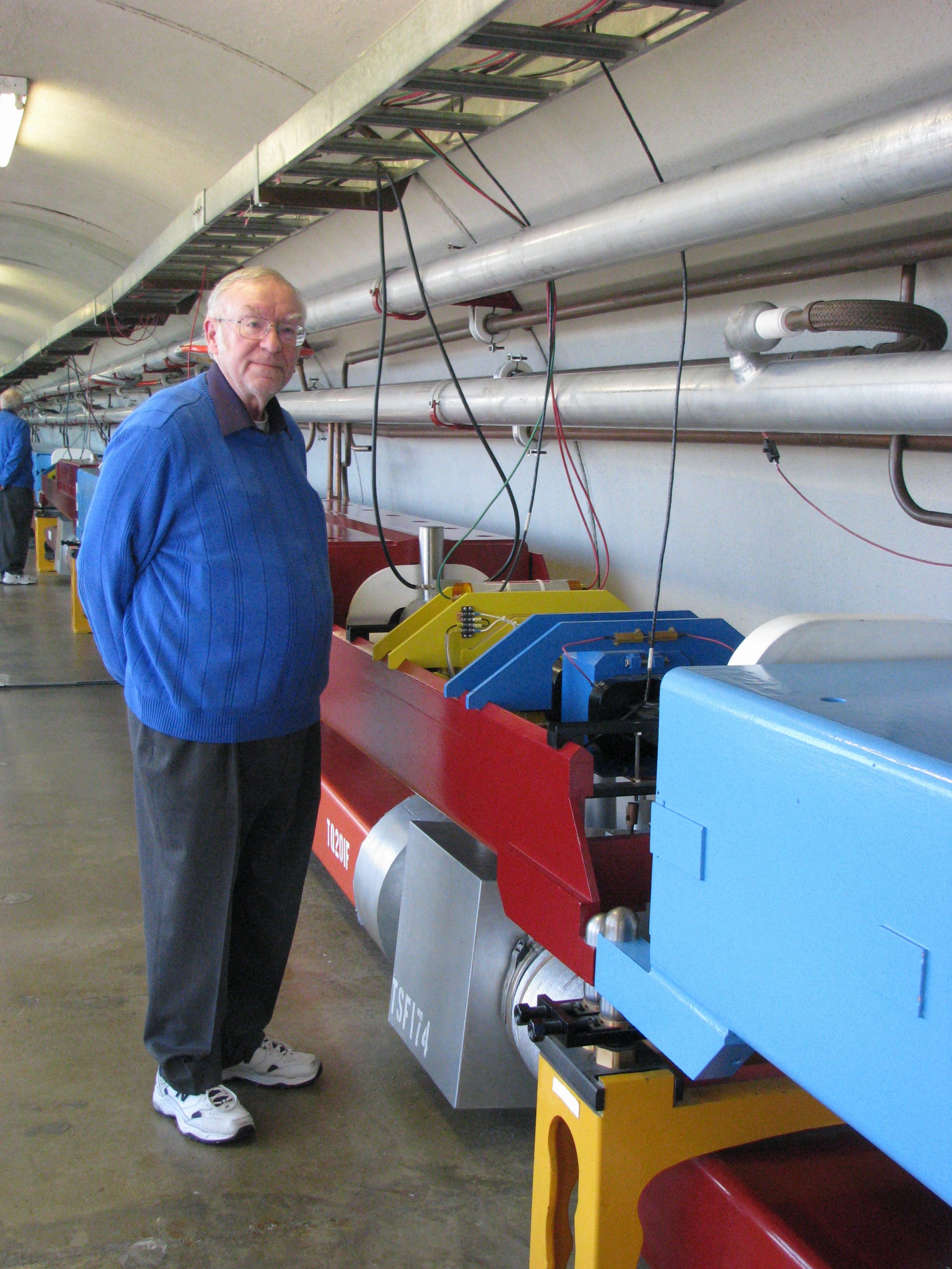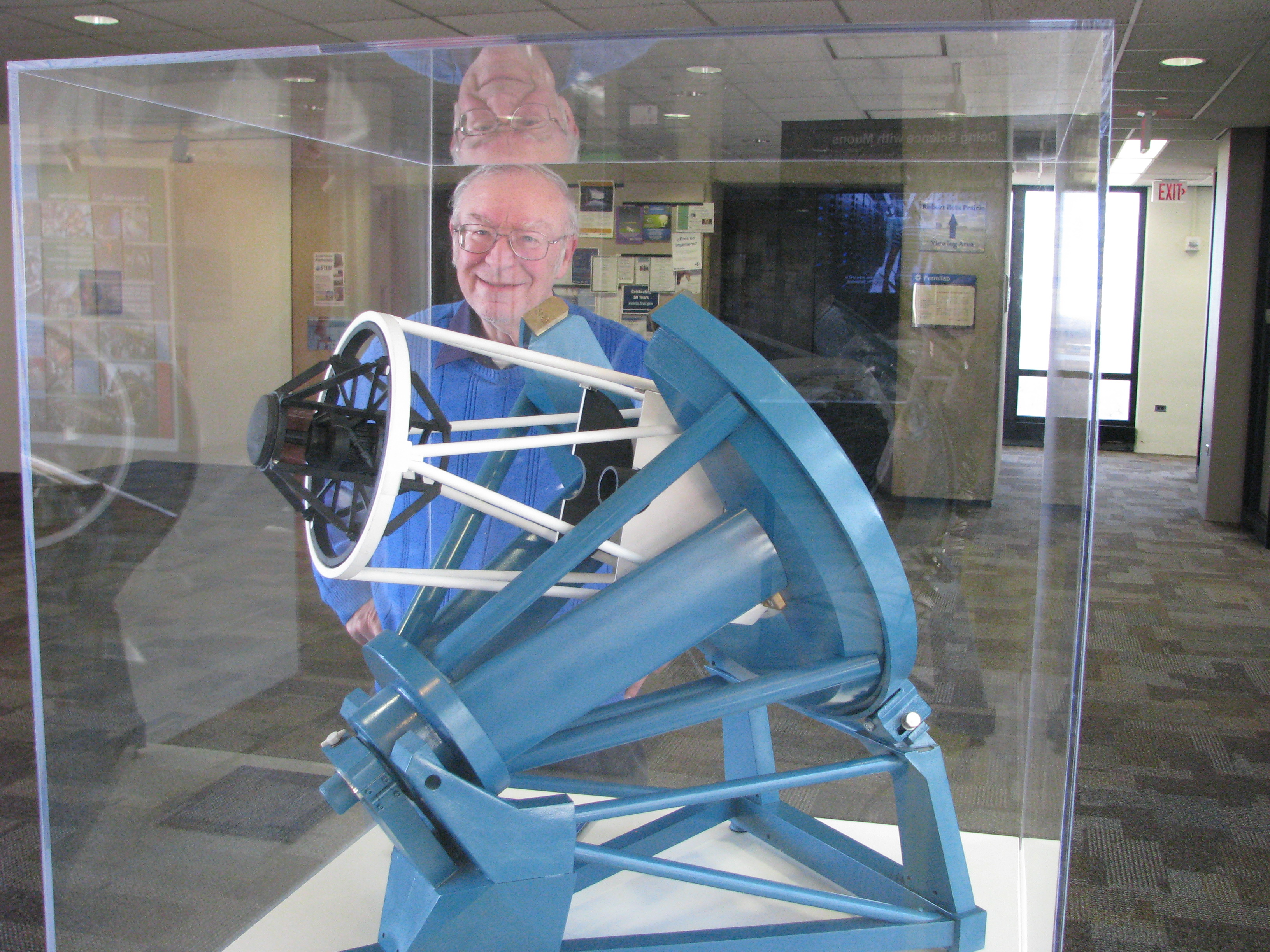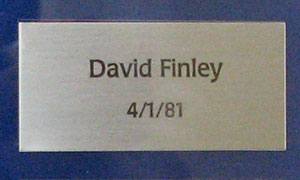David A. Finley retires after 36 years to the day on April 1
On April 1, 1981, Fermilab hired scientist David A. Finley as a full-time employee. Having already begun his research here as a graduate student five years earlier, he was already strongly connected to the lab. And, he says, he will remain scientifically connected to even after he retires.
He will retire on Saturday, April 1 — 36 years to the day after he was hired.
Throughout his career, Finley’s work involved him in numerous science experiments, as well as multiple roles that spanned from research to management.
Finley summarizes the decades by recalling 17th-century polymath Blaise Pascal.
“‘Rem viderunt causam non viderunt.’ It is certainly relevant for science as well as life: ‘They have seen something, but they have not seen the cause,'” Finley said.
Finley started his experimental career with his Ph.D. thesis on experiment E357 and then continued with E472, E605, E608, E778, MiniBooNE and SciBooNE. He is currently a member of the Dark Energy Survey Collaboration and the LSST Dark Energy Science Collaboration.
When he came on board in 1981, Finley became head of the Switchyard Group, and he helped design and implement a way to extract the Tevatron particle beam to the fixed-target area. By employing a new technique that moves the beam splitting devices across the beam extracted from the Tevatron, rather than the traditional technique of moving the beam across the devices, the 800-GeV beam was split along the same distance provided by the 400-GeV Main Ring beam. This implementation eventually led to the 2000 discovery of the tau neutrino.
In 1985 he was the initial Tevatron run coordinator, and it was during this time that the first proton-antiproton collisions were observed at CDF. He worked on the beam lattice design for the low-beta quadrupole magnet inserts, which greatly increased the event rate for CDF and DZero.
He moved into a management role in 1991 as head of administration and environment, safety, and health in the Accelerator Division, developing and carrying out plans to implement new Directorate procedures. From there he was chosen to serve as head of the Accelerator and Beams Division, leading accelerator operations during the time that CDF and DZero discovered the top quark, in 1995.
“David was one of the key players in the development of the Tevatron program,” said Fermilab’s Steve Holmes.
In 2000 Finley served as the Next Linear Collider Fermilab lead scientist and organized the R&D production of X-band radio-frequency accelerator structures, which were successfully tested at SLAC. He was involved in the Fermilab Muon Collider and Neutrino Factory designs. He was also the lead organizer during the initial phases of the Fermilab-based R&D for liquid-argon time projection chamber technology.
In 2008 Finley joined the Dark Energy Survey. He organized shipments of equipment needed for the Dark Energy Camera from several countries to Chile.
“During his time on the Dark Energy Survey, David was always happy to provide valuable advice and support to the young people at the lab,” said Fermilab scientist Brenna Flaugher.
Janet Conrad, an MIT physicist currently working on MicroBooNE, says that Finley’s positivity is what got her to ask him to join the MiniBooNE neutrino experiment in 2002.
“What has always been great about Dave Finley is his ‘can do’ attitude. He came into MiniBooNE because of his interest in the beam, but in the end he learned about and contributed to many aspects of the experiment. He has never been a person who was stuck in a box.” Conrad said. “He is terrific at learning new ideas and running with them. This was apparent on MiniBooNE, and you can see it on his career that followed, where he moved on into astrophysics — very far from the original beams work that he started on with us.”
And even as Finley moved from one endeavor to another, he maintained the strong, scientific and personal connections that held his interest — and others’ — for 36 years.
“Over my career I have had the opportunity to serve both as David’s boss and to report to him as my boss. Both worked out fine, and we’re still friends!” Holmes said.
Finley’s retirement party will take place on Monday, April 17, from 3-5 p.m. in Wilson Hall. The room will be announced closer to the date.





